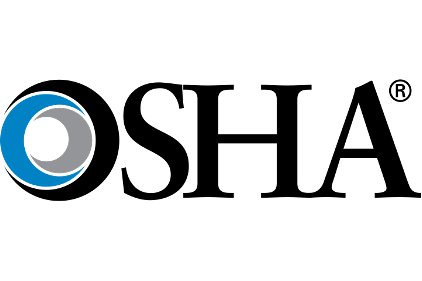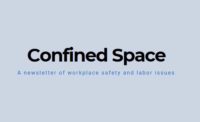Deputy Assistant Secretary testifies on OSHA's Voluntary Protection Programs

Whistleblower Program
We have also found it necessary to increase resources for our Whistleblower program. When the OSH Act was passed, Congress realized that OSHA inspectors would never be able to visit more than a small fraction of the nation's workplaces in any given year. Thus, the OSH Act relies heavily on workers to help identify hazards at their workplaces and to work with their employers to control those hazards.
But Congress also understood that workers are not likely to participate in safety and health activities, or report on hazardous conditions, if they fear that they will lose their jobs or otherwise be retaliated against as a result of their activities. For this reason, section 11(c) protects employees from discrimination and retaliation when they report safety and health hazards or exercise other rights under the OSH Act – one of the first safety and health laws to contain a provision for protecting whistleblowers.
Since the OSH Act was enacted in 1970, Congress has charged OSHA with enforcement responsibility for 20 additional whistleblower anti-retaliation statutes. Together, these laws protect employees who report violations of trucking, airline, nuclear power, pipeline, environmental, rail, mass transit, maritime safety, consumer product safety, and securities laws that are of fundamental importance in protecting the health, safety and well-being of all Americans.
Despite the increase in OSHA's statutory responsibilities, the staff charged with enforcing these laws did not grow significantly until FY 2010, when 25 whistleblower investigators were added to OSHA's ranks. Since 2010, however, four new whistleblower laws have been added to OSHA's enforcement program. It is vitally important that American workers feel safe to report threats to their own safety and to public safety, and, if their whistleblowing activities adversely affect their employment, they should not have to wait years for their cases to be heard.
Integrity of VPP
We understand there are concerns that VPP is not growing as quickly as it has in the recent past. As I outlined above, this is, in part a result of resource limitations. However, it is also attributable to OSHA's concern with maintaining the integrity of the program. VPP is recognized and respected as a quality program, one that recognizes the best of the best – companies that excel in safety and health and show that it is possible for businesses to be both profitable and safe.
Nevertheless, if the integrity of this program is compromised, it doesn't matter how many participants the program has or how fast it is growing. Over the past years, unfortunately, the program has faced very difficult challenges in this area. During the middle of the last decade, VPP grew so rapidly – more than doubling since 2003 – that the high number of reapprovals required as a result of that growth has put a serious resource strain on the agency's resources. As previously mentioned, we are now forced to devote most of our VPP resources toward conducting those reapprovals to ensure that everyone in the program deserves to stay in the program.
Moreover, when injury and illnesses numbers start rising; when significant incidents occur; when serious violations are identified; or, when VPP policies are violated, OSHA must be ready to take swift action. As the Center for Public Integrity pointed out in 2011, there had been numerous fatalities at VPP sites since 2000, and no action was taken against the participating companies, even in some cases where the fatalities were linked to serious or willful violations. They also found that some companies were retained in the VPP, even when their injury and illness rates were worse than the averages for their respective industries.
The Government Accountability Office (GAO) identified these VPP integrity concerns in two reports, issued in 2004 and 2009. In its first report, GAO warned that the VPP was growing faster than OSHA's resources might be able to sustain. And in 2009, GAO found that OSHA did not have sufficient internal controls to ensure the quality of VPP worksites, and that its oversight of VPP sites was limited. For example, GAO reported that OSHA had not been following through with appropriate action when fatalities or serious injuries occurred at VPP sites.
GAO made three key recommendations in its 2009 report:
- Develop a documentation policy for information on actions taken by OSHA's regions in response to fatalities and serious injuries at VPP sites.
- Establish internal controls that ensure consistent compliance by the Agency's Regions with VPP policies.
- Develop goals and performance measures for the VPP.
In response to these recommendations, OSHA issued five Policy Memoranda designed to strengthen the management and internal control of VPP. In August 2009, for example, we specified the actions National and Regional offices must take to improve administration of VPP, including verification of the quality of VPP self-evaluations that are required each year, as well as the quality of regional review of VPP sites.
In November 2009, we clarified the conduct expected of VPP evaluators. Dr. Michaels then issued a second memorandum in November 2009 clarifying the process through which OSHA's Regional offices must notify VPP participants and their union representatives of site reapprovals. This memorandum also specified the procedures for reconciling injury/illness data on the OSHA log required of employers with data submitted to OSHA during annual self-evaluations. And in February 2011, we clarified the policy and procedures under which VPP participants are to submit annual data.
To ensure compliance with these new policies, OSHA's National office reviews all fatality information submitted by the Regions and maintains up-to-date information on the status of each incident in its VPP fatality database.
OSHA also initiated annual audits of Regional offices' VPP participant files to ensure that participant files properly document the occurrence of a fatality or serious injury. The participant file audit requires each Region to submit copies of specified VPP files to the National office for review. Upon completion of the audit, a memorandum of findings documents the results.
In addition, we updated the Management Accountability Program (MAP) on September 15, 2010. The MAP contains an annual audit, performed by each Region, to ensure that field offices follow national program policies and procedures, including those established for VPP. In particular, the updated MAP incorporates VPP program enhancements, such as required Regional actions and documentation in response to a fatality or serious injury at a VPP site.
Safety Incentive Programs
In April 2011, due to our concern about workplace policies and practices that can discourage workers from reporting injuries, and following discussions with VPPPA leadership, OSHA clarified the policy and procedures governing the review of safety and health incentive programs run by VPP participants and applicants. After additional discussion with the VPPPA, OSHA further refined that policy in June of 2011. The new instruction states that incentive programs at VPP worksites should promote safety awareness and worker participation and should not contain features that have the potential to discourage reporting.
Some incentive programs – especially those based on injury and illness rates – discourage workers from reporting injuries. We've seen companies, for example, offer a pizza party or enter workers into a raffle if they meet a goal of not incurring reportable injuries over a specified period of time. Programs like these, while possibly well intentioned, ultimately discourage workers from reporting injuries because they want to receive the reward or do not want to be perceived as having ruined it for everyone. Unreported injuries that are not investigated cannot be used to help prevent future injuries. This is not what we want and ultimately, I do not think it is what VPP participants want, either.
But we certainly are not opposed to all incentive programs. On the contrary, a positive incentive program that encourages or rewards workers for serving on safety and health committees, completing safety and health training, or reporting injuries, illnesses, near-misses, or hazards can encourage worker involvement in a safety and health management system. An incentive program that encourages positive employee involvement is a valuable component of a VPP-quality safety and health management system.
Since the policy was implemented a year ago, most companies with impermissible incentive programs have voluntarily withdrawn them. In a very few cases, however, we have been forced to terminate their participation. This is unfortunate, but we believe that VPP companies must lead the way, promoting safety programs that do not discourage reporting.
Ensuring that workers can report injuries or illnesses without fear of negative consequences is crucial to protecting their safety and health. If workers don't feel free to report injuries or illnesses, an entire workforce is put at risk: employers don't learn about and correct dangerous conditions that have resulted in injuries, and injured workers may not receive proper medical attention or workers' compensation benefits to which they are entitled.
An April 2012 GAO report confirmed these problems with rate-based incentive programs. The GAO recommended that OSHA:
"Implement criteria on safety incentive programs and other workplace safety policies across all of its cooperative programs such as VPP and SHARP. The criteria should be consistent with the most recent VPP guidance memorandum that prohibits employers with safety incentive programs that focus on injury and illness rates from participating in the program."
As part of OSHA's comprehensive response to GAO, as well as the ongoing VPP improvement process, we are refining internal controls and doing a better job measuring program effectiveness. A VPP Workgroup, composed of personnel from both OSHA Headquarters and the Regions, has reviewed several issues, including consistency in VPP administration, response to fatalities on VPP sites, speeding up the approval process, use of limited resources, and the cost of administering the program.
A draft report and recommendations based on an internal management review of the program was submitted to the Assistant Secretary in November 2011. OSHA has already begun work on key changes to strengthen the program's effectiveness and integrity, many of which were recommended the review. In particular, the Workgroup report focused on ensuring the program's continued value and relevance as a model of excellence; identifying changes in policy, performance requirements, and procedures that will improve the program and maintain its integrity; operating the program consistently throughout the 10 OSHA Regions; and finding ways to address resource issues without compromising VPP's rigorous standards and requirements.
Conclusion
Mr. Chairman, VPP is an integral part of the toolbox which the Congress has provided to OSHA to accomplish our mission. We must have strong enforcement for those employers who simply will not adequately protect their workers' safety and health, as well as provide needed assistance to small employers and vulnerable workers. But we must also continue to recognize and reward employers who go beyond OSHA's requirements in protecting their employees. Since its inception, VPP has demonstrated its value in advancing this primary goal. We are extremely proud of this program and are working every day to strengthen it. VPP will continue to have the Department of Labor's full support.
Looking for a reprint of this article?
From high-res PDFs to custom plaques, order your copy today!






